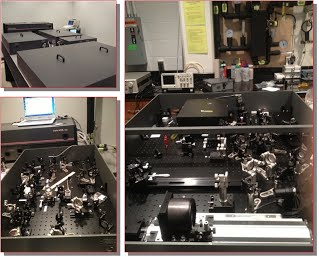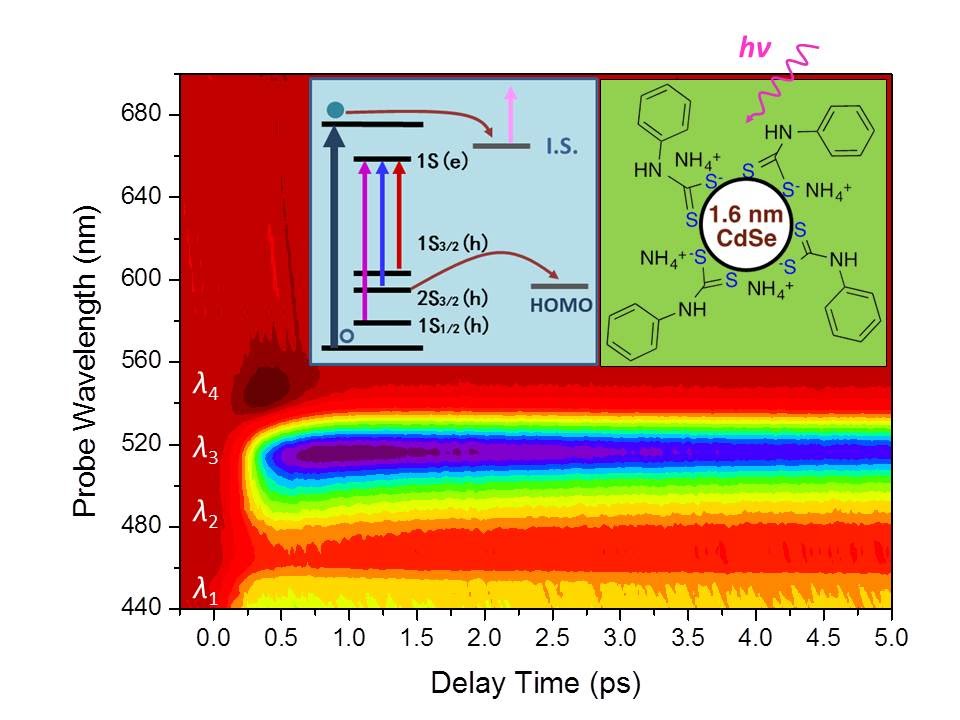The Ultrafast Spectroscopy Lab
 The ultrafast spectroscopy system in our group, located in the Conn Center for Renewable Energy Research, begins with a Clark-MXR Ti: Saphire regenerative amplifier, which is seeded by a fiber laser and pumped by a Nd: YAG laser. The output beam is split into four, two of which used to pump two tunable, non-collinear optical parametric amplifiers (NOPAs), the third used to generate white light and the last for frequency doubling or tripling. The two NOPAs together cover a wavelength range of 450-1600 nm, while the output from one of the NOPAs can be frequency-doubled into the UV region (250-450 nm). By pulse compression, we obtain laser pulses as narrow as ~30 femtosecond.
The ultrafast spectroscopy system in our group, located in the Conn Center for Renewable Energy Research, begins with a Clark-MXR Ti: Saphire regenerative amplifier, which is seeded by a fiber laser and pumped by a Nd: YAG laser. The output beam is split into four, two of which used to pump two tunable, non-collinear optical parametric amplifiers (NOPAs), the third used to generate white light and the last for frequency doubling or tripling. The two NOPAs together cover a wavelength range of 450-1600 nm, while the output from one of the NOPAs can be frequency-doubled into the UV region (250-450 nm). By pulse compression, we obtain laser pulses as narrow as ~30 femtosecond.
The laser system's wide wavelength coverage, flexibility, and ultrashort pulse width provide us with possibilities of doing many kinds of ultrafast spectroscopy experiments. Currently, the system is configured for transient absorption spectroscopy. The output from one of the NOPAs is used to pump the sample, while the probe beam is either the white light or the output from the other NOPA. We are using it to carry out an investigation on the charge transfer dynamics in nanoparticle/nanowire-based dye-sensitized solar cells (DSSC) and organic donor-acceptor heterojunction solar cells.

